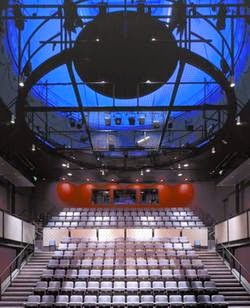For me, there is only one reason to go to the theatre, and only one value to be derived from it: to cope with the contradictions of life. Very simply, the theatre must awaken something that is asleep.
During the period you mention, the '60s, I was involved in politics, though I never in my life believed, even for one second, in any political system. It was clear in the '60s that everything that stemmed from right-wing thought was infinitely worse than what came from the Left. I did Marat/Sade because I felt that Peter Weiss, who believed himself to be a communist, formulated his own contradictions in the play: He felt as much for Sade as he did for Marat. Out of this strong and tragic conflict between two oppositional forces, a very fine theatrical event was fashioned. Weiss believed that he was on Marat's side against Sade; but his play denied this. And I directed it to make the spectator share this contradiction.
When I produced US, about the Vietnam war, all my colleagues wanted me to be a good English socialist, to show that all Vietnamese were good and all Americans bad. What I did was totally different: I produced something that, in those days, looked like a requiem. I wanted the audience to deal with a real tragedy; not to make right-wing people feel that they are in the right, nor to feel good as a left-wing person simply because you are in opposition. The point is that tragedy doesn't provide the answer, not to political or to social problems.
In those days it was possible to produce simplified, didactic plays, because it seemed possible to be clear about one's point of view. Today, let's be honest, nobody would dare to write a polemical play on the situation in Yugoslavia. Only a charlatan could write a text about Bosnia or write a play in the manner of Brecht where he explains who is guilty and who is not. If you did write such a play, where would you begin? Should we kill all the Serbs? Should we kill the Russians because they backed the Serbs? Should all the Croatians be killed because they tortured their prisoners? Or the Bosnians? You can approach these subjects only through tragedy, not on the level of politics. Moreover, who would dare, today, to write a play about the German reality? Who would come up with anything but banalities?
For me, today, Mahabharata is infinitely more profound in terms of politics and political education. And Shakespeare's texts are even more overwhelming. We are not allowed to simplify situations and political events. It would be dishonest.








.jpg)
.jpg)



.jpg)
.jpg)



